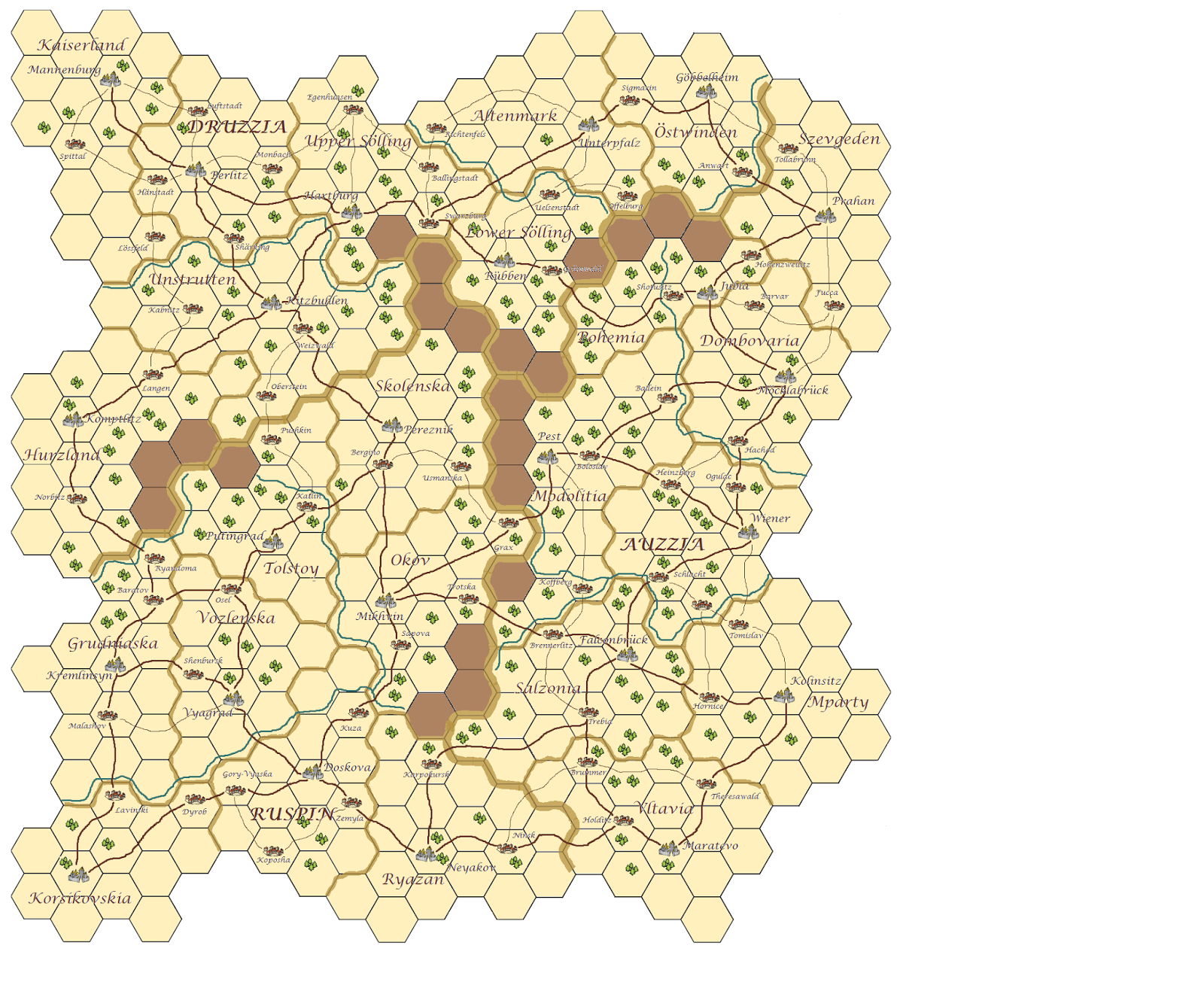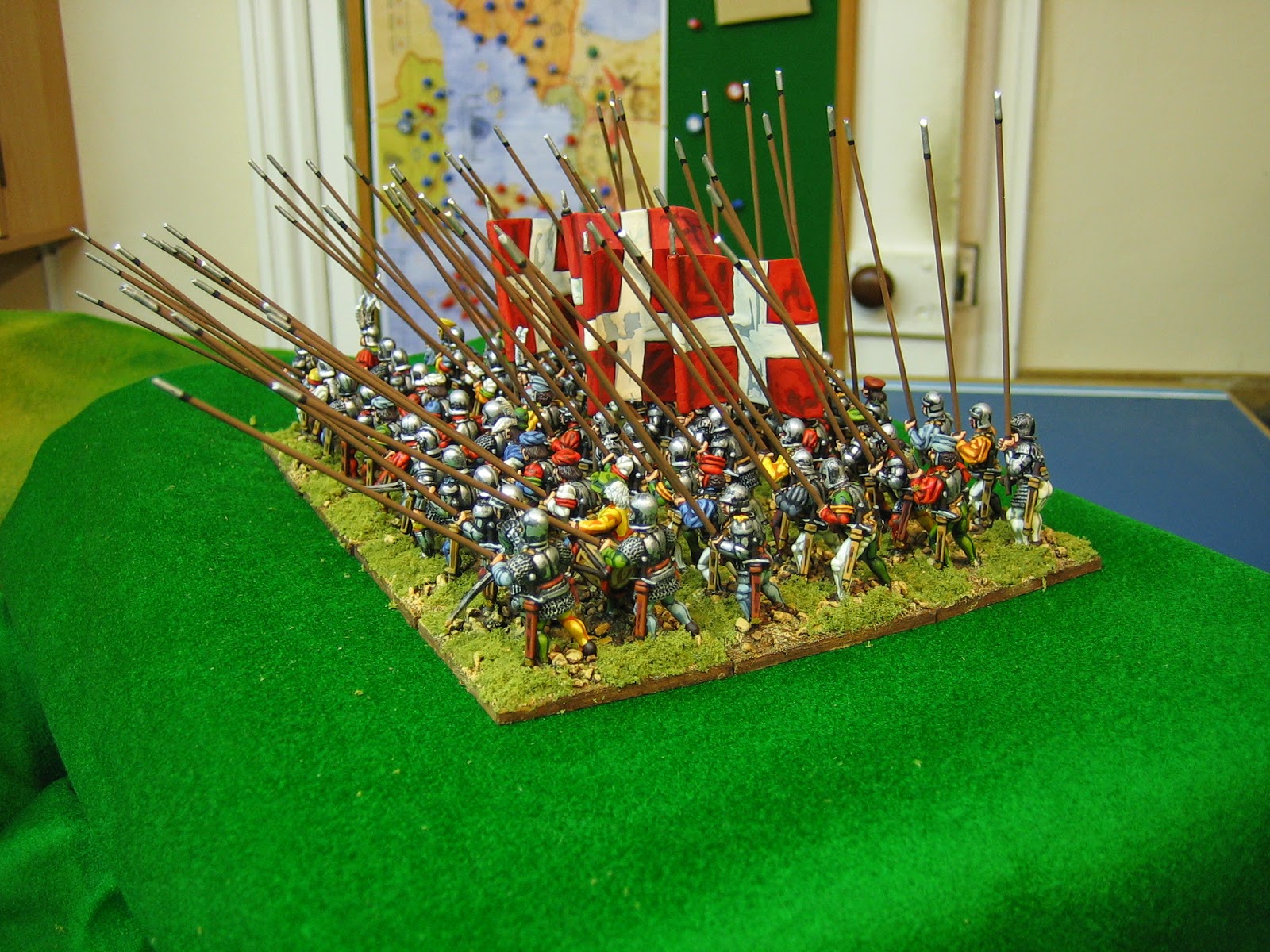Last night saw Mochkirch fought to a conclusion. It was a tight action with each side chasing the other, neck and neck, to zero army morale chips. The Prussians, as might be expected, gradually won the infantry battle whilst the Russians took an inordinate amount of pleasure emptying Prussian saddles. The action was at its most fearsome around Mochkirch, and on the Russian left. Anyway, here are some shots of the action - and the result.
In the centre the Prussians clear Mochkirch of Russians and start to fire volley after volley into the nearby Russian ranks.
The Russians counter attackwith determined (rembember that purple beaded Up 2 unit) grenadiers and regain a foot hold.
Behind Mochkirch a lone unit of Prussian infantry, forced into square for much of the battle by the presence of enemy cavalry, supports a cavalry attack.
Prussian saddles are being emptied at every turn and are quickly becoming surrounded.
On the Russian left more grenadiers lead another local counter attack.
The Prussians sweep around Mochkirch, the Russians are begginning to crack, they are at zero morale chips; the Prussians have one morale chip. They are desperately trying to get the Prussians down to zero, but being unable to issue morale challenges they are finding this very difficult (see note on the rule below).
The Russians turn Major Morale, the fail and their world turns red.
The Prussians win a huge chunk of initiative and turn Musket Reload - the Russains throw in the towel.
Note: We play morale chips, and Major Morale in a different manner to classic Piquet or Field of Battle. Morale chips are only lost when:
- A unit fails a morale challenge.
- A unit is disordered in melee.
- A unit is destroyed or routed.
- A morale challenge is issued.
- A rally is attempted on Officer Check.
- A major morale check is taken.
Because of this our battles are longer and harder fought.
Each time the Major Morale card is turned the side rolls D20 vs the number of units it has lost or are in rout. If a Morale chip was paid and the test is failed the army adds a Dress the Lines card to its deck - these cards are only added for failed Major Morale and officer losses, because we play with LOTS of units; we do not add Dress the Lines for units lost.
If the test is failed at zero morale chips, then each officer rolls D12 (adjusted for officer quality) Vs D8. If the test is failed the officer's units drop one level in quality Determined to Eager, Eager to Ready, Ready to Battle Weary. Battle Weary units that drop a level are removed from play. Battle Weary units have red beads in our games, so when the Russian world turned red, it did, literally. Only one command passed its check and a village was lost when the battle weary unit defending it disintegrated.











































